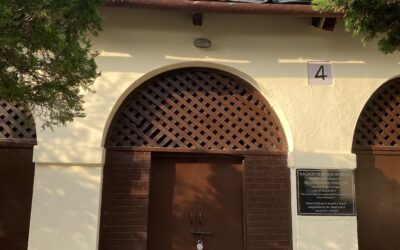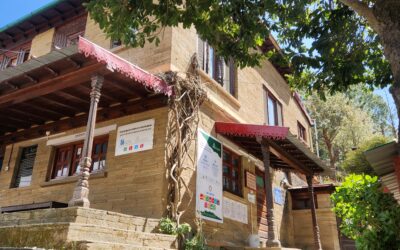Finding an interesting story can often be down to our ability or desire to look for it. Sometimes we may find them in the maps of the world and the kilograms of books written about them. We may find them in the words of people, in conversation, in speeches, songs as well as in an object. Or we may even find them underneath a stone in someone’s house or behind a few blades of grass.
Over the last many months, I have found myself interested in stories and narratives. So, I started looking for them in various places. I have looked for them in writing, in film, in research papers, in interviews. One area that was yet for me to explore was to look for stories in things around.
What Are These Objects?
All of us own a vast number of objects. Some of these are objects that we own intentionally. They can be somethings that we enjoy, have use for and are conscious about having. Then there are objects that we own unintentionally. These are objects that may have entered our homes and spaces for any one particular reason. Currently they may have no specific reason but somehow they just never made it back outside of our spaces.
Moving through someone’s our own home we may never even take notice of the dozens of ‘things’ that surround us. However when we start picking them up a story starts to unfold. If we start collecting a few of the objects lying around, it speaks of our likes, dislikes, interests and hobbies.
But what about the unintentional objects of our lives? Things that we find around our houses. What do these objects tell us about space?
To begin with they carry their own narrative. What object they are? What was their use. How to make them? Where t get it? But do they tell us about the place or the people? Do they communicate? Can they? These were all questions that were running in my mind as we stepped into creating the Lodai Object Library.
What Is An Object Library?
An object library may be pertaining to a particular time, a particular place, a particular person. It may lie at the intersection of any of these two or any other factors. The fundamental belief behind the object library is that it is able to preserve stories in a way mediums of text, audio, image might not be able to. Similar to a time capsule it is a capsule into another world.
Our exploration of the object library takes us today to the village of Lodai in Kutch. The home of Kumbhar Ismail Hussain. Ismail bhai is a skilled craftsman with a great sense of humour and a very warm, welcoming smile. Potters across the taluka Praise his ‘matkas’. Through this object library, we begin a journey to learn about his village, Kutch and the lives of potters.
Kutch
Kutch stands as a living time capsule, echoing the diverse cultures and traditions embedded along this ancient trade route. The Kumbhars of Kutch also trace their lineage back to Sindh. Many potters found their first base near Abdasa. Today we see potters spread across the district, in almost every village. A few clusters practice this craft. Fatehgarh, Khavda, Lodai, Anjar, Gundiyali, Tuna, Ratadiya, Chandrani are some of these villages. Know more through a photo story by clicking here
Lodai
Lodai is a village 40km north east of the town of Bhuj. It is home to the Rabari pastoralists, the Ahir farmers, Kumbhars, Marwadas, and many other communities. Lodai acts as an administrative and service hub for the villages. Being the few villages in the area with a bank and a high school. Lodai was once a famed pottery village. With approximately 40 potter families working out of it. The villages of Khavda and Lodai have gained renown for their craft.They have played an important role in shaping the identity of Kutch pottery. Lodai is known for the best quality terracotta pots and Khavda and Lodai are known for their fine painting. Back lines and white dots afe used to decorate earthen pots. Motifs that resonate with the people’s beliefs, landscape and culture.

Baans ki Turi / Peechhi


Potters in Kutch used a flat wooden brush called ‘Turi’ to paint on the terracotta vessels. The Lodai and Khavda pot paintings with black lines set them apart in the landscape of Kutch. A primary domain of the women, these paintings lend pottery from Kutch, its strong visual identity. The natural palette of the Kumbhars consists of various soil types. The red soil of the Geru found near Khavda. The white soil found in Mamuara, Nadapa or Dhaneti and the black soil found in Adisar and Veerani. Then, once softened, craftsmen place it on a piece of wood and beat it with another piece of wood. Turi is sourced from Maldharis (herders) in Kutch, traditionally.
“जब भी किसी मालधारी का छड़ी टूटता है एक कुम्भार उसको ले लेगा”
“मैंने अपनी बहन को मेरे लिए तुरी बनाने के लिए कहा था तो कहाः की लकड़ी लेने के लिए बेरडो जाना पड़ेग। वहां बहुत सारा मालधारी है न वहां से लकड़ी मिलना आसान है ।“
Kumbhar Ismail Hussain
Ash

Ash remains from the potter’s kiln are more of a resource than the byproduct of the pottery process. The ash is collected from the floor of the kiln after the firing is over. The ash can be used when placing wet pots on the wheel for any finishing touches or on any surface. This keeps the wet pots from sticking to surfaces.
Ash is also used to put on the Kunero/कुनेरो. A round stone that is held on the inside of the pot. It is beaten with a small wooden bat, called a ‘tiplo’ during the process of Ghadai. Ghadai is a tapping technique used after throwing is complete and the pot has dried for a day or two. This tapping helps make the pot bigger and the walls of the pot thinner and even.
Ash is also a great way to keep pests away from crops and is mixed in irrigation water by farmers. A lot potters were active in Lodai 20 years ago, mounds of Ash would be produced on a regular basis. This Ash used to be collected by members of the Ahir community who were farmers in the village. The Ahirs were also patrons of the potters in this village. Ash is one part of the exchanges between the two communities.
Singatra
Singatra is unique because of its insulating properties. It is used for roofs and walls for shelters of people or animals. These twig-like pieces of wood are able to protect one form both the hot and cold weather. The elongated interlocked twigs are pressed into the desired shape when fresh. Upon drying they take the given form and can be used in the structure as per one’s needs. Potters in the village of Lodai collect these from the fields of the farming communities.

Bokar Patthar

A type of stone that Ismail bhai brings from a hill 1km from his house. The stone finds another purpose in the construction domain, serving as material for building blocks and components of walls. Particularly during the Ghadai process, the Bokar stone proves invaluable. It is ground into a fine powder and sifted through a fine sieve. This powder plays a crucial role in coating the Kunero during Ghada, preventing it from catching clay from the pot.
Plastic Net
Ismail bhai often retrieves these plastic nets, typically used to transport onions in bulk, from shopkeepers who discard them. This mesh serves as a valuable resource for potters when their sieve is either broken or unavailable.These plastic nets are not very durable because they only last for about 3-4 months. One needs to ensure that the clay sieved doesn’t have any big rocks that can puncture the net. People also use the plastic net for finishing pots. They gently rub the surface of an unbaked pot with it to make it smooth and shiny.

Saree Waste

Saree fabric waste turns out to be a very useful and versatile material at one’s disposal. In many low-cost sheds and houses, people frequently use it as a rope to tie things together. They also utilize saree fabric waste to cover any holes in the traditional ‘Nambhado’ kiln, a triangular pit lined with pots ready for firing. They cover it with broken pots, grass, saree fabric and sand to seal all holes. Sealing any gaps allows for the kiln to burn more efficiently and achieve effective firing by keeping the heat even.
From this exercise of putting together the object library, I found how any place can be with stories and narratives. All it takes to uncover them is 15 minutes of picking up things and a relaxed conversation. In our often desperate search for a ’story’ dozens of narratives find themselves outside of our field of vision. Suspending the search for a specific story and delving into what is conversation has to offer opens up many doors.
Unlocking these doors one by one forces us to question: What is interesting? Where does the story lie? Is there only one story in front of our eyes? What are we choosing to see?




0 Comments